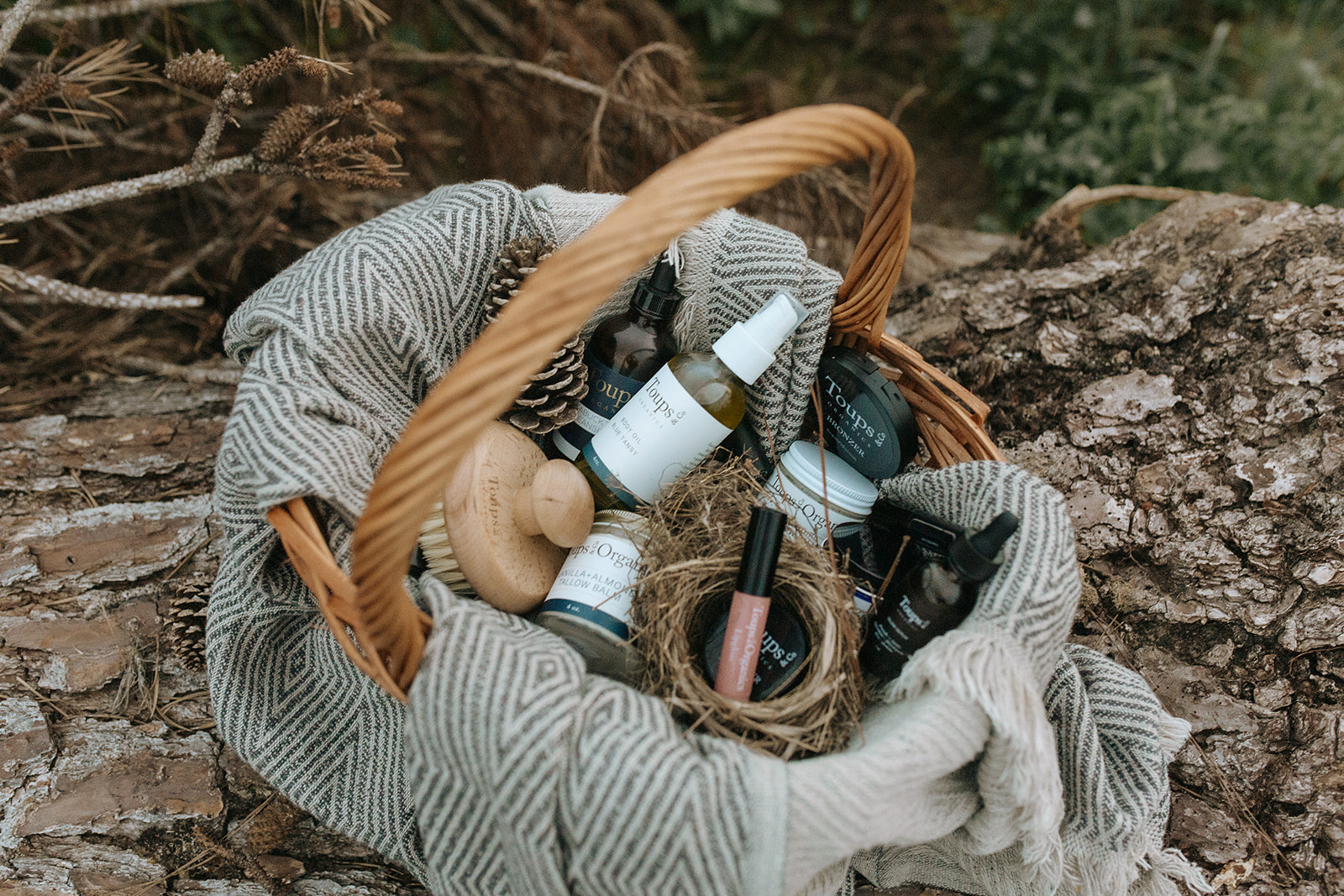Tiny plastic particles in our air, soil, and water (aka microplastics) are a major driver in environmental pollution. Unknowingly, we consume these plastics when we buy beauty products that use them as part of their formula.
One of the biggest environmental pollutants is invisible to the naked eye. Yep, we’re talking about microplastics. These tiny plastic particles exist in almost every corner of the world and take hundreds of years to decompose. Becoming aware of these plastics (and learning how to eliminate them from daily use) is an important step in protecting our bodies and the earth from harm.
What Are Microplastics?
Microplastics are invisible plastic particles that exist in our air, soil, water, and homes. Since they take a long time to break down, they have a significant impact on the environment and on our health.
Microplastics are so prevalent that babies encounter them before they’re born. In fact, it’s difficult to study the real impact of microplastics on our health because scientists can’t find a control group.
Are Microplastics Harmful?
Yes, microplastics are considered harmful. Although newly studied, the science on microplastics shows they can disrupt hormones, cause DNA damage, and impact fertility (in both men and women).
Carcinogenic
Although research on this topic is ongoing, studies show that microplastics and nanoplastics (an even smaller microplastic) can accumulate in organs and tissues, contributing to inflammation and genotoxicity. Studies determine this is a “strong predictor” for carcinogenic behavior of plastics in the human body.
Hormone disruption
In multiple studies, microplastics are considered hormone disruptors. Due to their chemical makeup, they can interfere with natural levels of estrogen and androgen hormones, leading to changes in fertility and thyroid health. People exposed to microplastics for long periods of time are at a higher risk.
DNA damage and oxidative stress
Microplastic (and nanoplastic) exposure has been connected to mitochondria damage, cell disruption, and DNA damage. They are a good example of microscopic chemicals that enter the body through food, water, skin, and air pathways.
How Common Are Microplastics in Skincare and Makeup Products?
According to one study, 90% of cosmetic products contain microplastics in the formula. These plastics are used to enhance a product’s texture, exfoliate, and act as cheap fillers. They’re also used to create glitter and shimmer.
When we talk about environmental responsibility and skin wellness, we have to talk about microplastics. It’s not enough for brands to create plastic-free packaging when there’s actual plastic in their skincare and makeup formulas.
The Impact of Microplastics on Skin Health
Our skin absorbs many of the toxic chemicals we apply to it, including plastics. But even without the long-term health and environmental impact, microplastics and nanoplastics can disrupt the skin barrier and cause irritation. They can clog pores, enter the skin cells, and change the nutrient profile of our skin. Most people use plastic on their skin unknowingly, and it can lead to acne, dry skin, and eczema.
The Environmental Impact of Microplastics in Skincare
The ingredient list on your everyday skincare bottle is difficult to understand. You really need to go down a research rabbit hole to figure out which products have plastic and other disruptive ingredients. But it’s so important to learn how to recognize these ingredients, since they have a significant impact on our earth.
Plastic can take up to 500 years to decompose. So, when we wash microplastics off our face, they don’t just disappear. They enter our water systems and air, becoming a microscopic pollutant (usually without our knowledge).
As consumers, we deserve to know what kind of environmental impact our everyday products have. We shouldn’t have to take on the responsibility for 500 years’ worth of pollution every time we use a makeup or skincare product.
How to Recognize Microplastics in Skincare and Makeup
Since 90% of cosmetic products contain microplastics, we can assume that most brands are using them as part of their formula. Look for…
- Anything with “poly” in the name (like polypropylene, polyacrylamide, polyurethane, or polymer)
- Anything with “methyl” or “metha” in the name (like methacrylate copolymer or methyl methacrylate crosspolymer)
- Dimethicone
- Nylon
- Ethylene
- PEGs (polyethene glycol) or PPGs (polypropylene glycol)
The best defense against microplastic ingredients (and microplastic contamination) is to look for products that have 100% recognizable ingredients. We love plant-based oils, flowers, herbs, and animal-based formulas.
What Can We Do to Reduce Daily Exposure to Microplastics?
As a natural skincare brand, it’s our responsibility to create products with a low environmental impact. You should have easy access to products that are good for you and the earth. But modern life hasn’t quite caught up to this philosophy. So until it does, here are some easy ways you can reduce daily exposure and your environmental footprint.
Stop using plastic-based beauty products
Check your skincare, makeup products, hair products, and soaps for plastic-based ingredients. Eliminating these drastically lowers daily exposure and environmental impact.
Filter your tap water
Since so many microplastics enter our water sources, it’s important to filter your tap water. Use a filter that’s designed to remove plastic particles, like the Berkey, Crystal Quest, Clearly Filtered, or Aquasana. You can also try a reverse osmosis water filtration system for your home, like the MitoLife.
Nourish and detox your cells
Remember, there’s no control group for microplastics, so we can’t avoid them entirely. But we can take measures to gently encourage our cells to detox. Visit a sauna regularly, use a red light device, hydrate with minerals, and reduce stress. Support your cells with vitamin C, NAC, and phospholipid supplements, so they can function at their best.
Buy natural fiber clothing
Most modern clothing is made out of plastic. From stretchy yoga pants to t-shirts to swimwear, plastic is woven through our most intimate fabrics. Swap these clothes for natural fibers, like wool, cotton, or linen to reduce landfill pollution.
Get natural foods from your local farmer
You can reduce environmental plastic consumption simply by shopping locally. Your neighborhood farmer and rancher doesn’t need to package fruits and veggies that are sold directly to the consumer (you). This means, you can worry less about microplastic contamination on your food.
Use glass and wooden dishes in your kitchen
Swap your plastic kitchen utensils for wooden ones and choose glass storage containers whenever possible (especially when re-heating your food). This reduces your environmental footprint and should limit your exposure to harmful chemicals.
Buy from brands who are environmentally conscious
Many brands consider their carbon footprint and give back to environmental efforts (big wins!). But this isn’t enough if their formulas are full of plastic and take hundreds of years to biodegrade. It’s so important to start with the formulas first, decreasing demand for plastic production overall.
Eco-Friendly Skincare vs. Nose-to-Tail Skincare
When buying a skincare product, you should be mindful of the long-term impact. Eco-friendly skincare brands create plastic-free formulas and carefully consider their packaging. But we can actually take this one step further with nose-to-tail skincare.
The nose-to-tail concept comes from primal communities who believed in using the whole animal as a way to honor it and the earth. Many of the animal-based “scraps” that are wasted during production are super nourishing for our skin and bodies.
This is why we’re so passionate about animal-based skincare (particularly, tallow skincare) because it’s a way of using a nourishing ingredient that would otherwise go to waste.
It’s Completely Possible to Nourish Without Synthetics
We know the science behind microplastics is defeating. It’s easy to feel powerless in a world that’s quite literally built on plastic. But we can’t create change unless we start somewhere.
We invite you to start here, with natural and eco-friendly skincare (no plastic-based formulas, we promise).
The benefit of removing plastics from cosmetics far exceeds environmental impact. You may experience a more balanced complexion, less acne, better skin barrier, and peace of mind knowing plastic isn’t entering through your skin cells.
Natural skincare existed long before plastic, and it can not only improve your health but also give your skin cells nutrients they can actually use.
Begin Your Plastic-Free Era

